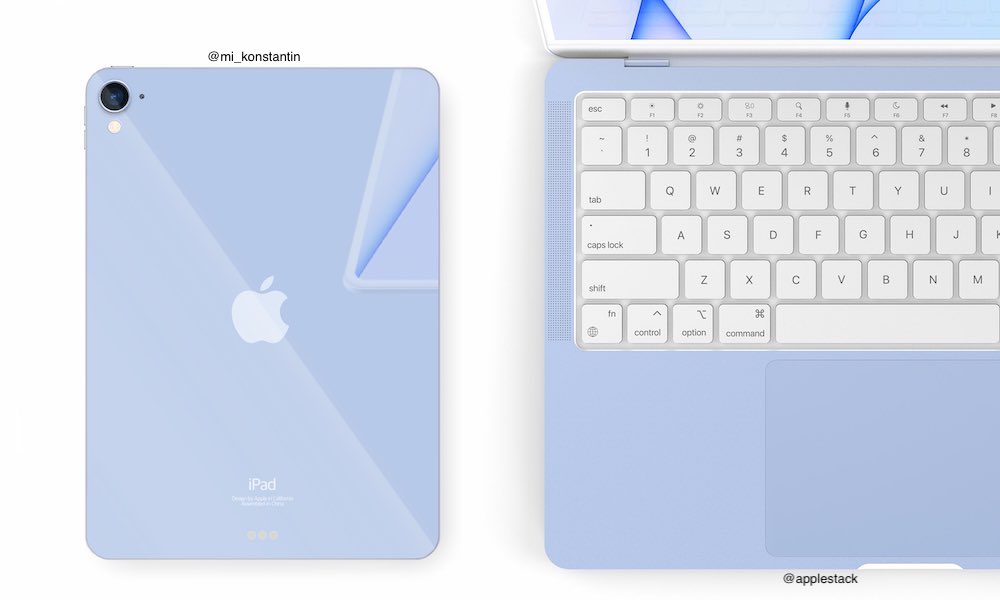Apple’s Still Experiencing an iPad Shortage | Will This Affect Its Spring Event Plans?
 Credit: Hadrian / NYC Russ / Shutterstock
Credit: Hadrian / NYC Russ / Shutterstock
Toggle Dark Mode
The global supply chain has barely begun its recovery from the impact of the global health pandemic. This has already forced Apple to make some difficult choices over the past two years, and it’s unclear when that’s actually going to change.
During its Q1 2022 earnings report last week, Apple candidly revealed that iPad sales had dropped precipitously over prior years. Of course, Apple didn’t have too many brand-new iPad models to sell during this past holiday quarter, but it’s also clear that it simply couldn’t make enough of them to keep up with demand.
During the earnings call that followed the report, Apple CFO Luca Maestri pointed to supply constraints as the biggest reason for the lower numbers. Apple estimated that it could have done $1.2 billion more in iPad sales had it not been for the challenges in getting enough parts to build them.
Unfortunately, it doesn’t sound like much has changed since then. With limited components available to Apple, the company has had to allocate those to the products where they’re most needed, and the iPad has gotten short stick.
According to a report from Nikkei Asia this week, Apple has understandably been prioritizing iPhone manufacturing at the expense of the iPad assembly lines. In fact, Nikkei’s numbers show that this has become skewed even further in favour of the iPhone in recent weeks.
Looking at the past two months of shipping data, wait times for iPad orders have improved only slightly since December, while those for iPhones have “shrunk dramatically,” getting as low as 10 days for some models of the iPhone 13 — a remarkable improvement from last year.
Customers ordering a new iPad (64GB model) on Apple’s website on Jan. 28 faced an average wait of about 50 days, a slight improvement from the 55-day delivery times for iPad orders placed in early December.Nikkei Asia
Wait times for iPads are somewhat dependent on where the customers are ordering from, and of course which model they’re looking for, but they’re still at least 7–8 weeks out. As Nikkei notes, a buyer in the Philippines who ordered a Space Grey 256GB iPad on January 28 would be unlikely to see it arrive before April 1.
Different Components
To be fair, it’s not likely that Apple is deliberately stalling iPad production by reallocating components to the iPhone. As Nikkei’s sources explain, the iPad has more than a few unique components that Apple simply can’t get sufficient supplies of at all right now.
Instead, it sounds like a case where Apple is reassigning materials for iPads that they couldn’t otherwise build anyway. After all, if you can’t get any iPad LCD screens at all, there’s really no point in saving other common components like power management chips for the iPad. You might as well just use them to build more iPhones instead.
For instance, the LCDs used by the iPad depend far more on “legacy silicon process nodes,” than the OLED displays used in the iPhone 13 lineup. Since far more consumer electronics use LCD technology, these are in very short supply these days.
Since iPads have greater than 8-inch displays, they need a lot of display drivers and unfortunately display drivers are produced at legacy process nodes — which is at the core of the semiconductor supply crunch.Wayne Lam, senior director of research, CCS Insight
Meanwhile, not only is there less demand for the more advanced chips used to drive OLED displays, but chipmakers tend to prioritize their production since they command higher prices and therefore larger profit margins.
Apple’s Spring iPad Lineup
Multiple rumours have been pointing to Apple announcing at least one new iPad model this spring, but some are now fearing that these latest problems could throw a monkey wrench into the company’s plans.
While it’s unclear how many iPad models may be on the table for a spring event, the smart money says that we’ll see at least a new fifth-generation iPad Air show up. It’s been over a year since Apple’s midrange tablet received its last update, and it’s now the oldest iPad model that Apple sells. It’s also a full CPU generation behind the iPad mini 6, which came out last fall with the same A15 chip found in the iPhone 13 lineup.
There’s a slim possibility that Apple could also unveil new iPad Pro models as well, but this seems far less likely. The M1-powered models are doing well enough, and while the next-generation iPad Pro will likely feature Apple’s M2 chip, it seems unlikely that Apple will put this into an iPad before it comes to the Mac — which probably isn’t happening until the fall.
Instead, the spring Mac lineup will likely just close the loop on Apple’s M1 family. There’s still an Intel Mac mini that’s waiting for the Apple Silicon treatment, not to mention the larger iMac, which is rumoured to be an “iMac Pro” with an even more powerful M1 chip. Sadly, however, even if that was ever on deck for the spring, it looks like that’s not the case anymore.
Getting back to the iPad, Apple did indicate that it’s hoping the supply chain situation will improve by March, which might be just in time to announce a new ‘iPad Air 5’ without worrying about not being able to make enough to keep up with demand.
There have also been rumours the iPad Air would get an OLED display, which could help alleviate some supply chain issues. Unfortunately, the latest information we’ve heard suggests that’s not happening quite yet.
It’s also safe to say that a mini-LED display for the iPad Air is completely out of the question. The 11-inch iPad Pro hasn’t even gotten that upgrade yet, which is another reason why the iPad Air is unlikely to go OLED so quickly. While OLED is now considered a notch down from mini-LED, it’s definitely an upgrade over the Retina LCD inside the 2021 11-inch iPad Pro. In fact, it’s the smaller iPad Pro that may end up getting an OLED display this year.
At the end of the day, though, it’s probably safe to say that Apple will forge ahead anyway with whatever it has ready, regardless of supply chain problems. After all, we heard the same story last year, particularly concerning the mini-LED iPad Pro, but none of this stopped Apple from announcing several new products on schedule, even if some customers had to wait a few weeks longer to get their hands on the newest devices.
[The information provided in this article has NOT been confirmed by Apple and may be speculation. Provided details may not be factual. Take all rumors, tech or otherwise, with a grain of salt.]









